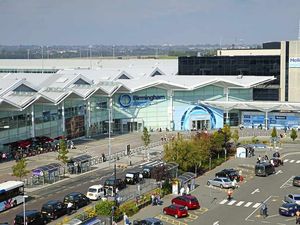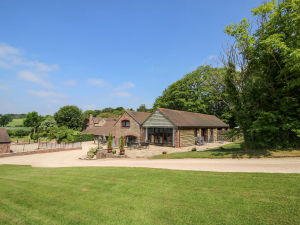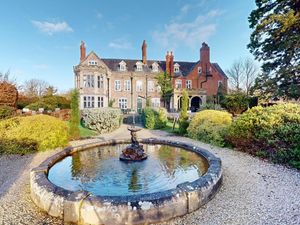Travel review: All can enjoy poetic Swansea Bay
The marina of course was just as it should be – gulls swooping over a fishingboat-bobbing sea under the fine blue skies of a fine spring day.
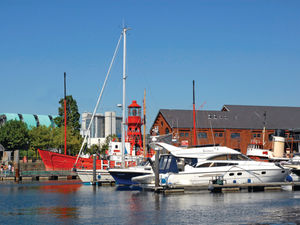
This was Swansea, birthplace of poet, performer and writer Dylan Thomas, and a must-see city for fellow fans of this extraordinary writer who bedazzled us with his brilliance.
The marina square is named after the man himself and gives pride of place to his statue, hand-on-knee looking wistfully out to the hills, with the Dylan Thomas Theatre, where he began his performing career, behind him.
This was our first stop on a tour arranged for us by Visit Swansea Bay, an organisation which is opening people’s eyes to the wonders of this little piece of coastal Wales, often lurking in the shadow of its bigger cousin Cardiff.
And open they should, for Swansea Bay has much to offer - not just to Dylan fans but to foodies, historians, the sporty and the bucket-and-spade families.
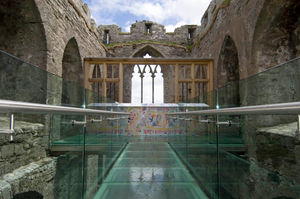
The waterfront area is dotted with pubs and restaurants and is home to several galleries and the National Waterfront Museum – as well as visiting boats, a floating lightship and a former oil-burning tug.
We had an excellent view of this nautical panorama from our lunch-time table at The Swigg – when we weren’t admiring the fresh flowers in the vintage spirit bottles and the awards hanging on the wall. This converted warehouse with its brick interior shouts class and cool, and its menu shouts ‘try me!’.
We opted for leek croquettes, Welsh cheese bon bons, Welsh rarebit and a Welsh breakfast plate of cockles, bacon and sourdough.
Every mouthful was delicious, and we could have savoured more but the pull of the Dylan Thomas Centre, just a few minutes walk away, was too strong. This imposing structure houses a permanent exhibition dedicated to Swansea’s favourite son, which attracts visitors from all over the world.
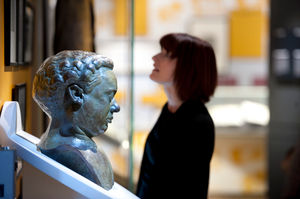
‘Love the Words’ takes the form of a timeline, taking us from his school days and his first poems to the people and places, loves and letters of his later life. We see the suit he wore on his American tour, see first editions and revel in highlights of Under Milk Wood.
There are listening posts where from roomy armchairs you can hear recordings not just of the theatrical rise and fall of his voice reading poetry and giving lectures, but the reflections of others – what his family and friends thought about him.
Now Geoff Haden does not claim to be either, but his devotion to the Welsh bard has seen him devote the last 16 or so years to turning the old Thomas home into a shrine to his memory.
Being the perfect mix of a Swansea man, Dylan fan and structural engineer, Geoff has reverted the property from being a collection of bed-sit rooms, complete with 1970s avocado bathroom suite to a near-replica of the house the Thomas family made home in 1914.
Geoff himself gives guided tours of Number 5, Cwmdonkin Drive, and obviously loves every china dog, antimascassar, copper pan and coverelet.
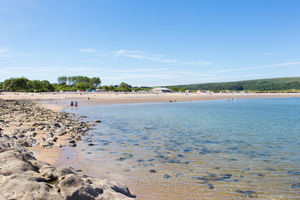
For me, it wasn’t the front room where Dylan was born that sent a shiver up my spine, but the parlour, which plays such a central role in A Child’s Christmas in Wales.
Close your eyes and you can see the tipsy aunts, hear the carousing uncles and imagine Christmas morning spinning tops and sugar mice.
The home is also available for weddings, conferences, private parties and overnight stays, but our home for the night was the Marriott Hotel, back on the waterfront - the perfect central location to relive our day and charge our literary batteries helped along with smoked salmon and hake and tomato soup and tandoori lamb cutlets.
Next morning our bay view was overcast and we cursed ourselves for not bringing our sports bags to make use of the gym, sauna and swimming pool, but we had remembered our rainwear and Mumbles was waiting.
Even though its Victorian pier is closed for restoration, the village, just a few miles away, parades tradition and a quieter pace of life.
The Gower Gallery and the Lovespoon Gallery are ablaze with local talent, while the little boutiques and tearooms are a draw for any visitor.
The biggest attraction on the whole seafront has to be Verdis, a wonderful family-run cafe, ice-cream parlour and licensed restaurant.
Every time we walked by the 400-seat glass-fronted building there were queues to get in, so we counted ourselves very lucky when we were given two of the best seats and enjoyed a Mista Focaccia and a prime chicken sandwich, which were light, fresh and delicious.
Then it was on to a very cold but sunny Oystermouth Castle, whose pretty but modest cottage-lined street approach belies the bragging rights of the view from the top.
You have to be brave – the best place to admire the curve of Swansea Bay stretching our below is from the 30-foot high glass bridge over the medieval maze of vaults and staircases.
Even this picture-postcode vista, however, was trumped by the setting of our last stop on our South Wales adventure – the Oxwich Bay hotel, where we were treated to mussels and duck; salmon and fish and chips – and the sight, just yards away, of waves crashing onto the beach as the sun began to set over the hotel gardens.
Pure poetry, pure Dylan.
Fact file
Visit www.dylanthomastheatre.org.uk to find out more about the venue and its latest performances
For more information about the region itself take a look at the Visit Swansea Bay website at visitswanseabay.com
For more information about the Marriott Hotel in Swansea visit www.marriott.co.uk
Get more details about the Gower Gallery by visiting www.gowergallery.co.uk

